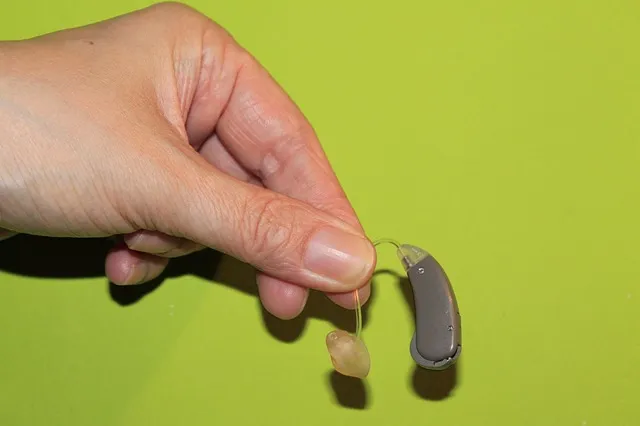The human digestive system works like a high-efficiency factory, breaking down food into essential nutrients your body needs. But how is the small intestine designed to absorb digested food so effectively?
The answer lies in its unique structure, which maximizes surface area, ensures rapid nutrient transport, and uses specialized cells to extract every possible nutrient. Let’s break down the fascinating science behind this powerhouse organ in this article.
What Makes the Small Intestine a Nutrient Absorption Powerhouse?
The small intestine dominates digestion with three structural advantages: a massive surface area, dense blood networks, and ultra-thin tissue layers. These features work together to pull nutrients from food and send them into your bloodstream.
First, imagine spreading out the inner lining of the small intestine. Instead of a smooth tube, it’s folded into millions of finger-like projections called villi.
Each villus has an even smaller microvilli, creating a surface area over 250 square meters larger than a tennis court. This design solves a key problem: maximizing contact between digested food and intestinal walls.
This smart design ensures nutrients don’t go to waste and enter your bloodstream efficiently.
How Do Villi and Microvilli Help in Nutrient Absorption?
Villi are the heroes of nutrient absorption. Let’s explore their role:
-
Surface Area Expansion: Without villi, the small intestine would need to stretch 600 feet long to match its current absorption capacity. The folds and projections condense this length into just 20 feet.
-
Blood Supply Network: Every villus contains capillaries and a lymphatic vessel (lacteal). These vessels act like highways, transporting fats, amino acids, and glucose directly into circulation.
-
Speed-Optimized Lining: Villi walls are one cell thick. Nutrients pass through quickly without needing to navigate multiple layers.
This trifecta ensures no nutrient slips through unnoticed.
Fun Fact: This structural adaptation is why you start feeling energized soon after eating!
How Does the Small Intestine Transport Nutrients?
The small intestine doesn’t just absorb nutrients—it ships them out fast. After passing through villi, glucose and amino acids enter capillaries. These blood vessels merge into the hepatic portal vein, directing nutrients to the liver for detoxification before reaching the rest of the body.
Fats take a different route. They enter lacteals, which connect to the lymphatic system. From there, fats bypass the liver and flow directly into the bloodstream near the heart. This dual transport system keeps all nutrient types moving efficiently.
Why Are Thin Walls Important for Absorption?
Speed matters in digestion. The small intestine’s lining is only one cell thick, a design that slashes the distance nutrients must travel. Oxygen and carbon dioxide easily diffuse through thin membranes in your lungs, and the same principle applies here.
How Thin Walls Speed Up Digestion:
-
Less Resistance: Nutrients move without delay, unlike thick-walled organs.
-
Minimal Energy Use: No extra effort is needed to "push" nutrients through layers.
-
Fast Access to Blood Vessels: Nutrients are absorbed within minutes, not hours.
This setup is why you feel energy from a meal within minutes, not hours. This design makes digestion fast, efficient, and energy-saving for your body.
What Else Does the Small Intestine Do? The Small Intestine’s Hidden Jobs
Besides absorbing nutrients, the small intestine performs other essential functions:
|
Function |
Role in Digestion |
|
Enzyme Production |
Releases peptidases, lipases, and sucrase to break down proteins, fats, and sugars. |
|
Immune Defense |
Contains Peyer’s patches—lymphatic tissues that trap pathogens. |
|
Hormone Secretion |
Produces cholecystokinin (CCK) to regulate appetite and bile release. |
These extra roles make the small intestine a multi-tasking organ, supporting digestion, immunity, and metabolism.
How Do Other Organs Help the Small Intestine?
The small intestine doesn’t work alone—it relies on other digestive organs for support. The liver, pancreas, and gallbladder prep nutrients for absorption:
-
The pancreas sends bicarbonate to neutralize stomach acid.
-
The liver produces bile, stored in the gallbladder, to emulsify fats.
-
Gallbladder stores and releases bile when needed.
Without this teamwork, the small intestine would struggle to extract nutrients efficiently.
Can the Small Intestine’s Design Fail?
Yes. conditions like celiac disease damage villi, flattening them and slashing absorption capacity. Symptoms like anemia, fatigue, and weight loss emerge because the intestine can’t grab nutrients. Crohn’s disease causes inflammation, thickening intestinal walls, and slowing transport.
Treatments often focus on reducing inflammation or avoiding triggers (like gluten) to protect the intestine’s structure.
If you experience frequent bloating, fatigue, or nutrient deficiencies, consult a healthcare provider.
Where Do Nutrients Go After Absorption?
Once absorbed, nutrients take two paths:
-
Immediate Use: Glucose fuels brain function and muscle movement. Amino acids help repair tissues.
-
Storage Mode: Excess glucose becomes glycogen in the liver; fats stockpile in adipose tissue for future energy needs.
The small intestine’s design ensures every cell gets fed on time, preventing energy crashes. This ensures a steady energy supply even when you're not eating.
Key Takeaways: Why Is the Small Intestine So Efficient?
- Villi and microvilli create a huge surface area for maximum absorption.
- Capillaries and lacteals transport nutrients quickly and efficiently.
- A one-cell-thick lining allows nutrients to pass into the bloodstream instantly.
- Digestive enzymes and hormones assist in breaking down food.
- The small intestine also plays roles in immunity, metabolism, and digestion.
Take care of your gut—it's the key to better energy, immunity, and overall health!
Final Thoughts
From villi to blood vessels, the small intestine’s architecture turns meals into usable energy. Its large surface area, rapid transport systems, and hormonal controls keep your body nourished. Now that you know how is the small intestine designed to absorb digested food, you can truly appreciate the science behind every bite!
If you experience persistent digestive issues like bloating or irregular bowel movements, consult a healthcare provider to assess your small intestine’s health.
If you find this guide helpful, share it with friends and family to spread awareness about digestive wellness!
Frequently Asked Questions
Why does the small intestine have three sections (duodenum, jejunum, ileum)?
Each section specializes: the duodenum breaks down food, the jejunum absorbs most nutrients, and the ileum absorbs bile acids and vitamin B12.
Can you live without a small intestine?
No. Without it, nutrient absorption becomes impossible. Patients require intravenous feeding (TPN) if the small intestine is removed.
How long does food stay in the small intestine?
Food spends 3–6 hours here, allowing thorough nutrient extraction.
Do probiotics affect small intestine function?
Yes. Probiotics balance gut bacteria, aiding digestion and reducing inflammation that can damage villi.
Why does alcohol irritate the small intestine?
Alcohol inflames the lining, disrupting enzyme production and slowing nutrient absorption.
Does stress impact small intestine efficiency?
Chronic stress reduces blood flow to the gut, weakening digestion and absorption over time
Are nutrient deficiencies always linked to the small intestine?
Not always. Deficiencies can stem from poor diet, but persistent issues often point to intestinal damage.
Reviewed by







